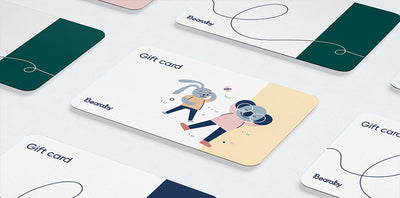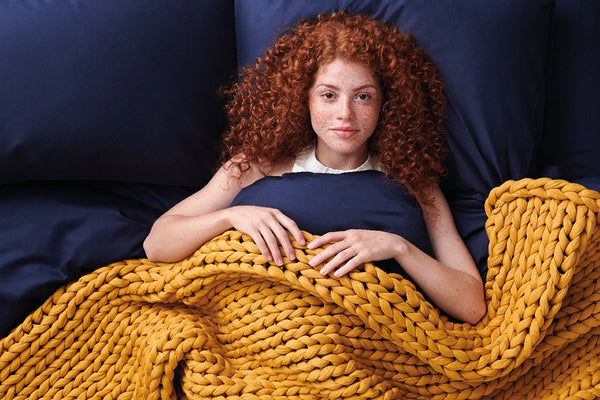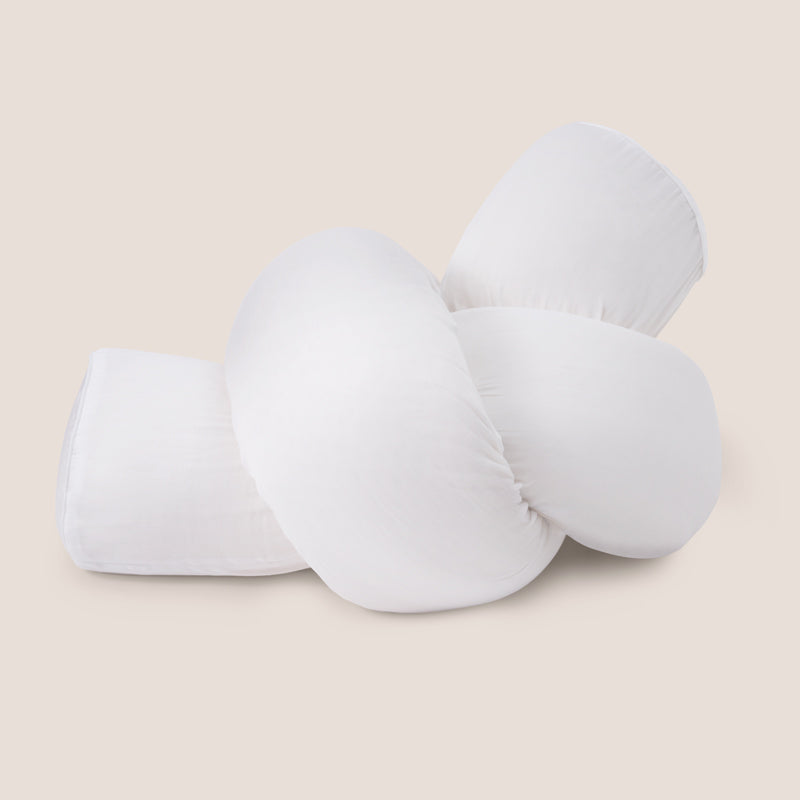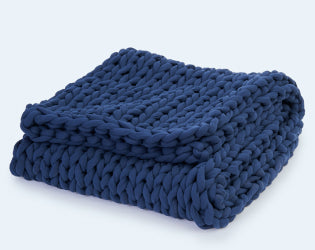How Long is a Power Nap: Your Guide to the Perfect Brain Recharge
In a world that keeps us constantly on the move, finding moments of rest and rejuvenation is essential. Enter the power nap – a short, revitalizing break that holds the potential to transform your day. In this guide, we delve into the art of power naps, exploring their benefits, ideal duration, and the delicate planning of a refreshing nap.

Bearassentials
Incorporating a micro nap into your daily routine can become a cherished ritual that your body anticipates.
Staying well-hydrated enhances the benefits of power naps, helping you wake up with a rejuvenated sense of alertness and focus.
Consider bringing your own blanket for familiar coziness and a touch of home comfort during your naps.
Did you know?
Leonardo da Vinci, the brilliant mind behind the Mona Lisa, practiced a polyphasic sleep pattern, incorporating multiple short naps throughout his day.
Wondering how to beat the afternoon slump? Experts recommend 10 to 20 minutes of power napping. But when exactly should you nap? Before 3 pm is best, and here, we tell you why. You might also be considering whether to try caffeine naps or not. They’ve worked for some, but how do you know if they will work for you?
Caffeine nap or not, power naps are excellent in increasing alertness, boosting your creativity and memory, and improving physical performance. We’ve created this comprehensive guide for all your nap-queries to beat the afternoon tiredness.
While power naps will not rid your body of its natural midday energy dip, they are a simple way to allow your brain to recharge for a brief time window. Understanding easy facts about napping science will help you curate for yourself the naps you deserve.
What is a power nap?
A power nap is a short midday nap that can boost energy and concentration. It’s like a gentle breeze for your brain. In some parts of the world, like China and Spain, midday naps are considered as a cultural norm while in other countries, like the United States, naps have been unjustly linked to laziness.
The truth is, power naps are your allies in the war against the midday energy dip. Think about it – when the day gets demanding and your schedule's bursting, a nap can swoop in and gift your brain the short break it deserves.

What is the correct power nap time?
A power nap lasts between 10 to 20 minutes. Think of it as a bite-sized piece of relaxation – small, yet incredibly satisfying. Anything under 30 minutes works great, but be cautious not to cross the half-hour mark because that might come with unwelcome grogginess upon waking.
How long is a power nap to get energy?
For an energy boost from your nap, aim for what sleep experts recommend: a 10 to 20-minute window. This timeframe lets your body unwind and your mind recharge. If you find yourself needing a longer nap, it could be your body's way of signaling a need for more rest – which you can address by ensuring you get sufficient sleep at night. As for afternoon naps, just below 30 minutes is the upper limit you should consider.
This is because around the 30-minute mark of your nap, your brain transitions into deep sleep. So, interrupting this phase might leave you grappling with sleep inertia – that foggy feeling upon waking.
Is a 30-minute nap a power nap?
Absolutely, though experts recommend the sweet spot to be even shorter – around 20 minutes. If you need a little extra time, go for a nap within 30 minutes or less. This way, your brain experiences a bit of light sleep, sufficient for an energy boost. However, for a longer nap option, you can also nap for 90 minutes, which will allow your body to go through a full sleep cycle.
What Is the Best Time of Day to Nap?
The best time for your power nap is between 1 pm and 3 pm. During this window, your body's internal rhythms take a dip, creating a natural lull that might have you yearning for a nap.
How late is too late to take a nap?
Sleep specialists advise taking afternoon naps before 3 pm. Napping too close to bedtime can disrupt your sleep routine. The general rule is to allow at least 8 hours between your nap and bedtime. This is especially helpful if you struggle with falling asleep, staying asleep, or waking up feeling rested.
Where to Take a Nap
Creating your perfect nap haven is all about considering temperature, noise, and lighting. Seek out a spot that is fairly dark, free of noise distractions, and sufficiently cool. Try supplementing your nap spot with a weighted blanket, whose heaviness and evenly-distributed mass can apply pressure on your body as you nap. Hand-knit weighted blankets like our Cotton Nappers, for instance, envelop you in cloud-like comfort as you sleep, while simultaneously reducing cortisol, the stress hormone.
You may want to couple your weighted blanket with a comfy body pillow too, like our 100% organic cuddler pillow, the cozy cherry on top of your nap sundae.
How to take a power nap
- Choosing Your Nap-ctuary: Begin your nap journey by selecting the perfect spot for your power nap. It could be your favorite couch, a cozy bed, or perhaps a plush bean bag that cradles you just right.
- Planning a Gentle Awakening: As you prepare to embark on your brief journey to dreamland, consider setting an alarm or enlisting the gentle aid of a friend to wake you. Set this intention as you close your eyes, knowing that you're granting yourself a well-deserved moment of reprieve, one that perfectly aligns with your body's rhythm.
- Bidding Electronics Farewell: Before surrendering to the embrace of your nap, you’ll need to let go of your phone and computer screens. The blue light on electronic devices can interfere with your ability to fall asleep. Before you nap, create a space that's free from digital distractions, allowing your mind and body to unwind.
- Enveloping Comfort: For your final addition to your nap station, it’s a good idea to grab a trusty weighted blanket. Weighted blankets offer a layer of evenly-distributed weight that will cocoon you as you sink into your nap. Using blankets made with breathable material will add extra ease with helping you relax. This is why our Cotton Napper is hand-knit without any fillers, with you and your naps in mind.
Power Nap Benefits
- Increase Alertness: According to the Centre for Disease Control and Prevention(CDC), naps are an excellent countermeasure to the fatigue that comes with the day. So, say goodbye to midday drowsiness as power naps effortlessly rejuvenate your senses, leaving you brimming with renewed vigor.
- Improve Cognitive Functioning: Naps can improve logical reasoning, creativity and memory recall. As you awaken, you might find that your thoughts are sharper, your ideas clearer, and your mental landscape refreshed.
- Enhance Physical Performance: Facing a demanding physical task? A power nap might just be your energy elixir. A brief nap can also shorten your reaction times and elevate motor performance. One study evaluated napping behavior among athletes and across multiple research projects, where it was found that napping was associated with an increase in maximum power, leg strength, and longer distances of running.
- Strengthen Emotional Equilibrium: Naps go beyond a simple recharge, extending their embrace to improving your mood. By helping you release stress and tension, a short nap is capable of improving your mood.
- Resist Cardiovascular Diseases: Embrace the heart-health benefits that regular napping offers – it's like giving your cardiovascular system a daily hug. One study surveyed 3400+ individuals over a 5-year period and found that those who napped 2 to 3 times a week had improved cardiovascular events. Although naps cannot guarantee a healthy heart, they sure can promote a better functioning cardiovascular system.
Well, that depends. For some folks, sipping on a cup of coffee before a nap can give the caffeine time to work its magic just as they wake up. This means you could enjoy the perks of both a quick snooze and a gentle caffeine boost. But hold on, there's a twist. For others, especially those sensitive to caffeine's touch, a coffee-induced nap might actually interfere with your ability to fall asleep.
Before diving into a caffeine nap, take a moment to ponder your caffeine comfort zone. This simple move will help you decide whether to sprinkle a touch of caffeine into your nap recipe for that extra oomph or keep things caffeine-free. Either way, you're setting the stage for a nap that suits your rhythm.

How Do I Know If I Need a Power Nap?
For those hustling through packed schedules: If your day's a whirlwind of tasks, power naps can offer a moment of relief without derailing your entire routine.
And if sleep evaded you the previous night? Don't let drowsiness tag along during your day. A power nap can help ease those heavy eyelids and restore a touch of alertness. However, remember that naps aren't a universal fix. A recent study by Michigan State University revealed that naps cannot mitigate the effects of not getting 6 to 8 hours of sleep.
Keep in mind, though, that if you're clocking a solid 7 to 9 hours of sleep and still find yourself fatigued, consulting a sleep specialist might be a good step to explore underlying reasons. And if you wake up from your nap feeling disoriented, it might be worth considering your nap length. Power naps are meant to offer you rejuvenation, not confusion.
What Is the Difference Between Naps for Children and Adults?
Napping routines vary between children and adults, aligning with their unique sleep needs. For children, napping is an integral part of their development, helping them recharge amid growth spurts.
Babies up to about 3 months old need around 18 hours of sleep, which is typically broken down into a mix of short and long naps. By the time they are 12 months old, infants need 2 to 4 naps of 30 minutes to 2 hours each… on top of their nightly rest. Toddlers, ages 2 to 4, may transition from 2 naps to 1 longer nap, each of up to 3 hours.
By age 5 and onwards, most kids outgrow the need for naps, but a brief afternoon nap can benefit those who feel fatigued. Just like adults, kids should keep their naps well before bedtime in order to maintain a healthy sleep schedule.
Should I Change My Napping Habits?
Should the need to nap become frequent, that might signal a larger sleep insufficiency at play. While naps can somewhat counteract the weariness stemming from insufficient sleep, they can't fully replace a consistent and restful night rest. If continuous fatigue lingers, consulting a medical professional can help pinpoint any potential underlying sleep-related concerns.
Similarly, if you’re clocking in a healthy 7 to 9 hours of nightly sleep yet still encounter the urge for daytime dozing, a consultation with a healthcare professional could help illuminate potential sources of fatigue.
Conclusion
Incorporating power naps into your routine can provide an efficient afternoon mental refresh. When seeking a simple yet effective method to rejuvenate your mind, allocate 10 to 20 minutes for a brief nap. The ideal time for napping is between 1 pm and 3 pm, as napping too late might disrupt your sleep cycle. To ensure your nap remains beneficial and doesn't turn into deep sleep, consider using an alarm or enlisting a friend to gently wake you.
Creating a serene environment by minimizing light and noise is crucial for a successful nap. Enhance your nap experience with a weighted blanket like our chunky-knit Cotton Napper, designed to facilitate both relaxation and an invigorated wake-up. Pair this comforting blanket with our cuddler pillow, made from 100% organic cotton, delivering a soothing touch that cradles you as you rest.















